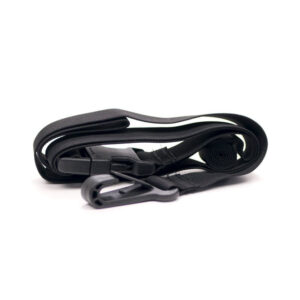Combating a painful, stiff neck
Neck pain can be divided into one of two categories – acute and chronic. Acute pain is more common, and probably what you’re used to experiencing. Acute pain may last between a few days and up to half a year. It’s usually caused by minor trauma, improper sleep or work position, diseases, or other day-to-day occurrences. Chronic pain is caused by arthritis, major trauma, or other chronic illnesses. Chronic pain may last a few years or even your whole life if not properly taken care of. For both acute and chronic pain, there is a number of tools to help relieve the pain. Since chronic pain is caused by illnesses diagnosed by a doctor, we’ll be focusing on mostly acute pain relief.
Stretching and exercise
Since acute pain is usually caused by compressed nerves, stiff muscles, or worn joints, stretching is usually the quickest relief you can get. Some of our favorite exercises are ones you can do behind a desk.
To begin, roll your shoulders back and hold the chair’s edges. Move your head up and backward while keeping your back straight. Imagine you’re leaning against a wall behind your head. For 30 seconds, stay in this position. Shoulder and neck tightness should be noticeable, but you shouldn’t experience pain.
Second, as in the previous exercise, straighten your back. Then move your head slowly left and right. Instead of moving the entire neck and shoulder region, focus on the connective muscles between the neck and head. Perform this exercise for 1 minute.
Third, continue the last exercise by extending the entire neck to the right. Then bring your chin down to your neck. Continue to move your chin back and forth, as if you’re nodding. Try to do that motion 20-25 times. Then, slowly move your neck to the other side and repeat.
The more regularly you stretch and exercise, the better you can manage your pain. But if exercising causes you more pain, it would be recommended to talk to a doctor.
Work and sleep
Bad posture, whether you’re sleeping or working, is possibly the source of your pain. For sleeping, it’s recommended to find a pillow that suits your needs. Quality pillows usually only cost a little more than what you can find in a supermarket, but really make a difference in your sleep quality. Having your neck in a comfortable position can relieve pain without any help. Considering we spend ⅓ of our day in bed, making it comfortable really makes a difference in our daily lives.
For work, especially if working in an office, we can easily forget ourselves and stay in a slumped position for hours on end. A comfortable chair should be your first step. If your workplace allows it, a standing desk is also an awesome tool for keeping yourself up and your neck in a comfortable position instead of looking down. Small changes are sometimes all you need to combat an aching neck.
Leave those heavy bags
If you happen to be someone who carries their backpack over one shoulder, stop. Placing all the weight on a single shoulder can really strain your neck, causing more pain. The same goes with tote bags. If it gets too heavy, carry it in your arms instead of your shoulder. And if you happen to talk on the phone with your phone being tucked between your ear and shoulder, stop that too.
Physiotherapy
Regular therapy can help prevent neck pains, even before it shows up. Using the Tracpal device, it’s easy to perform physiotherapy by yourself, without expensive visits to the doctor. Follow our online manual, it’s easy to use Tracpal for neck stretches. Find more information here: https://tracpal.com/manual/





